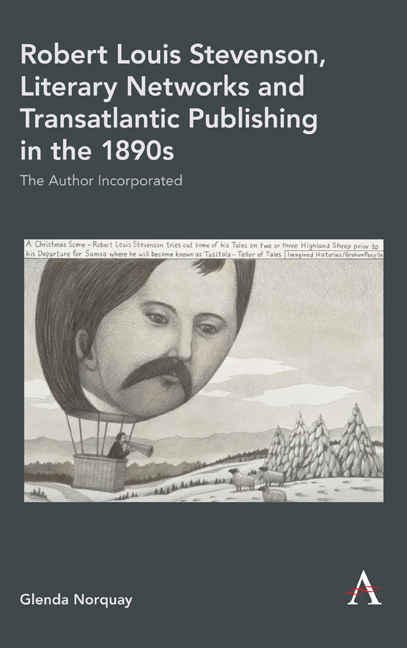 Robert Louis Stevenson, Literary Networks and Transatlantic Publishing in the 1890s
Robert Louis Stevenson, Literary Networks and Transatlantic Publishing in the 1890s Book contents
- Frontmatter
- Contents
- Acknowledgements
- Abbreviations
- Introduction
- 1 Lemuel Bangs: ‘The Senator’
- 2 A Tale of Two Texts
- 3 ‘A Gentleman Called Charles Baxter’
- 4 Sidney Colvin: Custodian and Monument
- 5 Family, Friends and Collaborators
- 6 Arthur Quiller-Couch: The Quivering Needle
- 7 Richard Le Gallienne: ‘Not While a Boy Still Whistles’
- Conclusion: Robert Louis Stevenson Incorporated
- References
- Index
4 - Sidney Colvin: Custodian and Monument
Published online by Cambridge University Press: 16 February 2020
- Frontmatter
- Contents
- Acknowledgements
- Abbreviations
- Introduction
- 1 Lemuel Bangs: ‘The Senator’
- 2 A Tale of Two Texts
- 3 ‘A Gentleman Called Charles Baxter’
- 4 Sidney Colvin: Custodian and Monument
- 5 Family, Friends and Collaborators
- 6 Arthur Quiller-Couch: The Quivering Needle
- 7 Richard Le Gallienne: ‘Not While a Boy Still Whistles’
- Conclusion: Robert Louis Stevenson Incorporated
- References
- Index
Summary
In 1891 Edward L. Burlingame, editor of Scribner's Magazine, described to his employer a first meeting with Sidney Colvin in London, confessing he rather liked him, ‘though I was prepared to detest him because Stevenson had always insisted that he and I had points of resemblance.’ Burlingame’s ambivalence about this comparison may have been justified but the parallels between the men are illuminating. Stevenson called Colvin ‘A difficult, shut up, noble fellow’ yet acknowledged the kind nature lying behind that facade. On hearing of Burlingame's death in 1923, J. M. Barrie also wrote to Charles Scribner, puzzling affectionately over the emotions the Editor had induced:
There seemed to me to be a sort of frozen geniality about him as if he would never quite let himself go, never quite loosen some troublesome bond, never quite let you see how warm his nature was. […] it made him more like a figure in some book he was writing, a figure that did not easily yield to my treatment as if I had got hold of a good thing and yet did not get inside him. He seemed to say you must find out for yourself how likable I am, I want you to find it out but I can't as easily as some people show you the way.
Such images of a walled self, of emotions that initially appear frozen, of careful, gentlemanly and ‘honourable’ guardianship, run through this chapter's discussion of Sidney Colvin, friend, mentor, editor and wouldbe biographer of Stevenson. Nicknames given to Colvin by Stevenson and Fanny – ‘the Monument’ and ‘the Custodian’ – were based on his post as curator at the British Museum. They invoke the role he played during their lives and after but suggest his wider significance in a literary culture preoccupied with memorializing, with reputation and, in Michael Anesko's phrase, with ‘documentary monumentalism’. In a study of ways in which ‘critical cohorts have attempted to shape – ideally to control – the contours of [Henry] James's posthumous reputation’, Anesko draws on the concepts of ‘Ventriloquism’, ‘Revival’, ‘Legend’ to map literary curating. In his taxonomy, two categories for thinking about James, are particularly applicable to this chapter: ‘Custodial Conflicts’ and ‘Textual Monumentalism’ have considerable purchase in understanding the dynamics between Colvin and Stevenson, both during and after the latter's life.
- Type
- Chapter
- Information
- Robert Louis Stevenson, Literary Networks and Transatlantic Publishing in the 1890sThe Author Incorporated, pp. 99 - 130Publisher: Anthem PressPrint publication year: 2020


